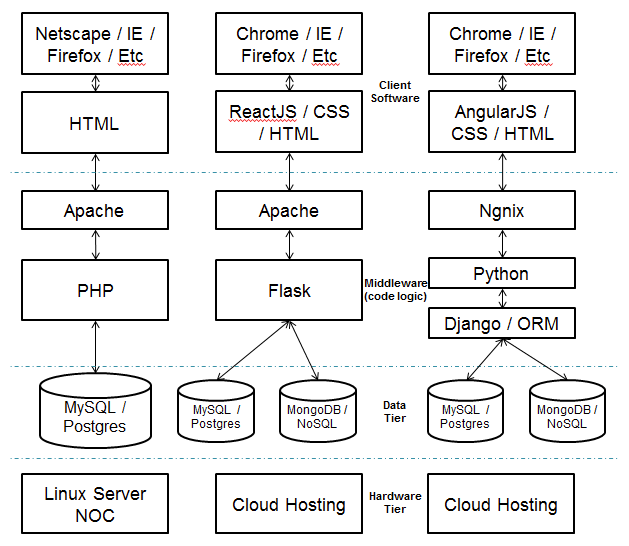
Hi Guys, Today we are going to talk about how to setup and write Integration Tests in Magento 2. As you might know you can write your integration tests for any part of your module for example Block, Controller, Console, Cron, Model, Observer, Plugin, Setup, UI etc. Before we start, we are going to outline the key function of integration test classes with brief explanation.
setUpBeforeClass– This is called once before running all tests in the class
tearDownAfterClass – This is called once after running all tests in the class
setUp – This is called before running a test in the class
tearDown – This is called before running a test in the class
To run all the integration tests for your whole instance you can use the following command
bin/magento dev:tests:run integration
To run all the integration tests for your specific module you can use the following command
php vendor/phpunit/phpunit/phpunit -c dev/tests/integration/phpunit.xml dev/tests/integration/testsuite/Magento/Catalog/
To run specific integration test you can use the following command
php vendor/phpunit/phpunit/phpunit -c dev/tests/unit/phpunit.xml.dist dev/tests/integration/testsuite/Magento/Catalog/Model/ProductTest.php
Please see the list of Integration Test functions which could be useful for your integration testing
AssertTrue/AssertFalse – Check the input to verify it equals true/false
AssertEquals – Check the result against another input for a match
AssertGreaterThan – Check the result to see if it’s larger than a value (there’s also LessThan, GreaterThanOrEqual, and LessThanOrEqual)
AssertContains – Check that the input contains a certain value
AssertType – Check that a variable is of a certain type
AssertNull – Check that a variable is null
AssertFileExists – Verify that a file exists
AssertRegExp – Check the input against a regular expression
Set Up Integration Tests for Magento 2
Step 1 – Create a new empty database for example “magento_integration_tests” using the following command
CREATE DATABASE magento_integration_tests; GRANT ALL ON magento_integration_tests.* TO 'root'@'localhost' IDENTIFIED BY '123123q';
Step 2 – Copy the file dev/tests/integration/phpunit.xml.dist to dev/tests/integration/phpunit.xml and you can change it to run only your custom integration tests on your local by changing the following information in the file -:
<!-- Test suites definition --> <testsuites> <!-- Memory tests run first to prevent influence of other tests on accuracy of memory measurements --> <!--testsuite name="Memory Usage Tests"> <file>testsuite/Magento/MemoryUsageTest.php</file> </testsuite> <testsuite name="Magento Integration Tests"> <directory suffix="Test.php">testsuite</directory> <exclude>testsuite/Magento/MemoryUsageTest.php</exclude> </testsuite--> <testsuite name="Scommerce"> <directory suffix="Test.php">app/code/Scommerce/*/Test/Integration</directory> </testsuite> </testsuites>
Step 3 – Copy the file dev/tests/integration/install-config-mysql.php.dist to dev/tests/integration/install-config-mysql.php and change the information based on Step 1
return [ 'db-host' => 'localhost', 'db-user' => 'root', 'db-password' => '123123q', 'db-name' => 'magento_integration_tests', 'db-prefix' => '', 'backend-frontname' => 'backend', 'admin-user' => MagentoTestFrameworkBootstrap::ADMIN_NAME, 'admin-password' => MagentoTestFrameworkBootstrap::ADMIN_PASSWORD, 'admin-email' => MagentoTestFrameworkBootstrap::ADMIN_EMAIL, 'admin-firstname' => MagentoTestFrameworkBootstrap::ADMIN_FIRSTNAME, 'admin-lastname' => MagentoTestFrameworkBootstrap::ADMIN_LASTNAME, ];
Now your integration setup is in place, let’s crack on with writing our first integration tests
Step 1 – Create your fixture file, this file will create the data which will be required to run your tests under ScommerceCustomTestIntegration_filesproducts.php
use MagentoTestFrameworkHelperBootstrap; /** @var $product MagentoCatalogModelProduct */
$product = Bootstrap::getObjectManager() ->create(MagentoCatalogModelProduct::class);
$product ->setTypeId('simple') ->setId(1) ->setAttributeSetId(4) ->setWebsiteIds([1]) ->setName('Simple Product') ->setSku('simple') ->setPrice(10) ->setMetaTitle('meta title') ->setMetaKeyword('meta keyword') ->setMetaDescription('meta description') ->setVisibility(MagentoCatalogModelProductVisibility::VISIBILITY_BOTH) ->setStatus(MagentoCatalogModelProductAttributeSourceStatus::STATUS_ENABLED) ->setStockData(['use_config_manage_stock' => 0]) ->save(); $customDesignProduct = Bootstrap::getObjectManager() ->create(MagentoCatalogModelProduct::class, ['data' => $product->getData()]); $customDesignProduct->setUrlKey('custom-design-simple-product') ->setId(2) ->setRowId(2) ->setSku('custom-design-simple-product') ->setCustomDesign('Magento/blank') ->save();
Step 2 – Create your integration test file which will run your test and confirm if data created in Step 1 matches what is expected on the frontend
namespace ScommerceCustomTestIntegrationController; /** * @magentoAppIsolation enabled */
class ProductTest extends MagentoTestFrameworkTestCaseAbstractController
{ /** * @magentoDataFixture Scommerce/Catalog/controllers/_files/products.php * @magentoAppArea frontend */ public function testViewAction() { /** @var $objectManager MagentoTestFrameworkObjectManager */ $objectManager = MagentoTestFrameworkHelperBootstrap::getObjectManager(); /** * @var $repository MagentoCatalogModelProductRepository */ $repository = $objectManager->create('MagentoCatalogModelProductRepository'); $product = $repository->get('simple_product_1'); $this->dispatch(sprintf('catalog/product/view/id/%s', $product->getEntityId())); /** @var $currentProduct MagentoCatalogModelProduct */ $currentProduct = $objectManager->get('MagentoFrameworkRegistry')->registry('current_product'); $this->assertInstanceOf('MagentoCatalogModelProduct', $currentProduct); $this->assertEquals($product->getEntityId(), $currentProduct->getEntityId()); $lastViewedProductId = MagentoTestFrameworkHelperBootstrap::getObjectManager()->get( 'MagentoCatalogModelSession' )->getLastViewedProductId(); $this->assertEquals($product->getEntityId(), $lastViewedProductId); $responseBody = $this->getResponse()->getBody(); /* Product info */ $this->assertContains('Simple Product 1 Name', $responseBody); $this->assertContains('Simple Product 1 Full Description', $responseBody); $this->assertContains('Simple Product 1 Short Description', $responseBody); /* Stock info */ $this->assertContains('$1,234.56', $responseBody); $this->assertContains('In stock', $responseBody); $this->assertContains('Add to Cart', $responseBody); /* Meta info */ $this->assertContains('<title>Simple Product 1 Meta Title</title>', $responseBody); $this->assertSelectCount('meta[name="keywords"][content="Simple Product 1 Meta Keyword"]', 1, $responseBody); $this->assertSelectCount( 'meta[name="description"][content="Simple Product 1 Meta Description"]', 1, $responseBody ); }
}
Step 3 – Run your test using the following command -:
php vendor/phpunit/phpunit/phpunit -c dev/tests/integration/phpunit.xml app/code/Scommerce/Custom/Test/Integration/Controller/ProductTest.php
That’s it, Hope this article helped you in some way. Please leave us your comment and let us know what do you think? Thanks.






